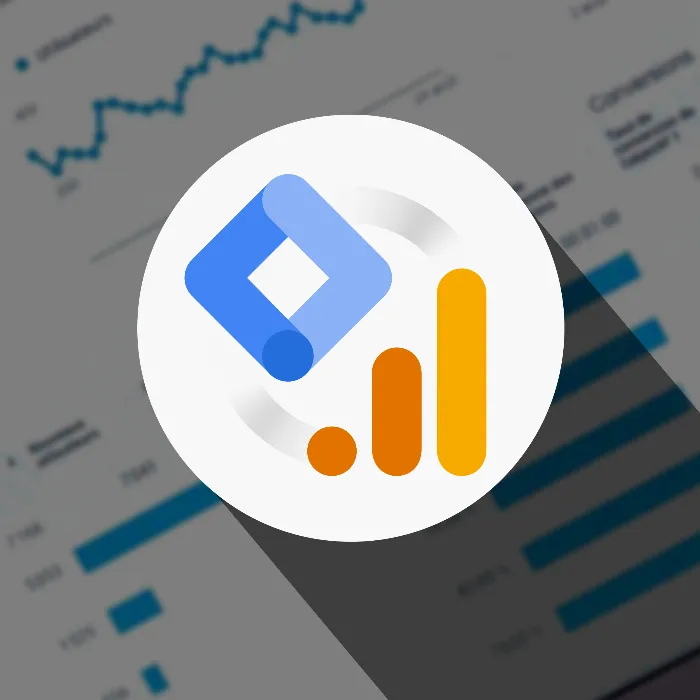When working with Google Analytics, it is crucial to capture your data as accurately as possible. One of the best ways to do this is by using custom definitions. These will help you track specific data that meets your requirements. In this guide, you will learn step-by-step how to set up custom definitions to optimize your analytical capabilities.
Main Takeaways
- Custom definitions allow for the capture of specific data in Google Analytics.
- The process involves integrating defined parameters and event tracking.
- The Debug View is a helpful tool to monitor your data in real-time.
Step-by-Step Guide
Step 1: Checking the Debug View
To get started, you should check the Debug View in Google Analytics. Here, you can actively see which data is being captured. You can see how many page views have been generated by you in the last 30 minutes, as well as the interactions. This is your basis for ensuring that everything is set up correctly.
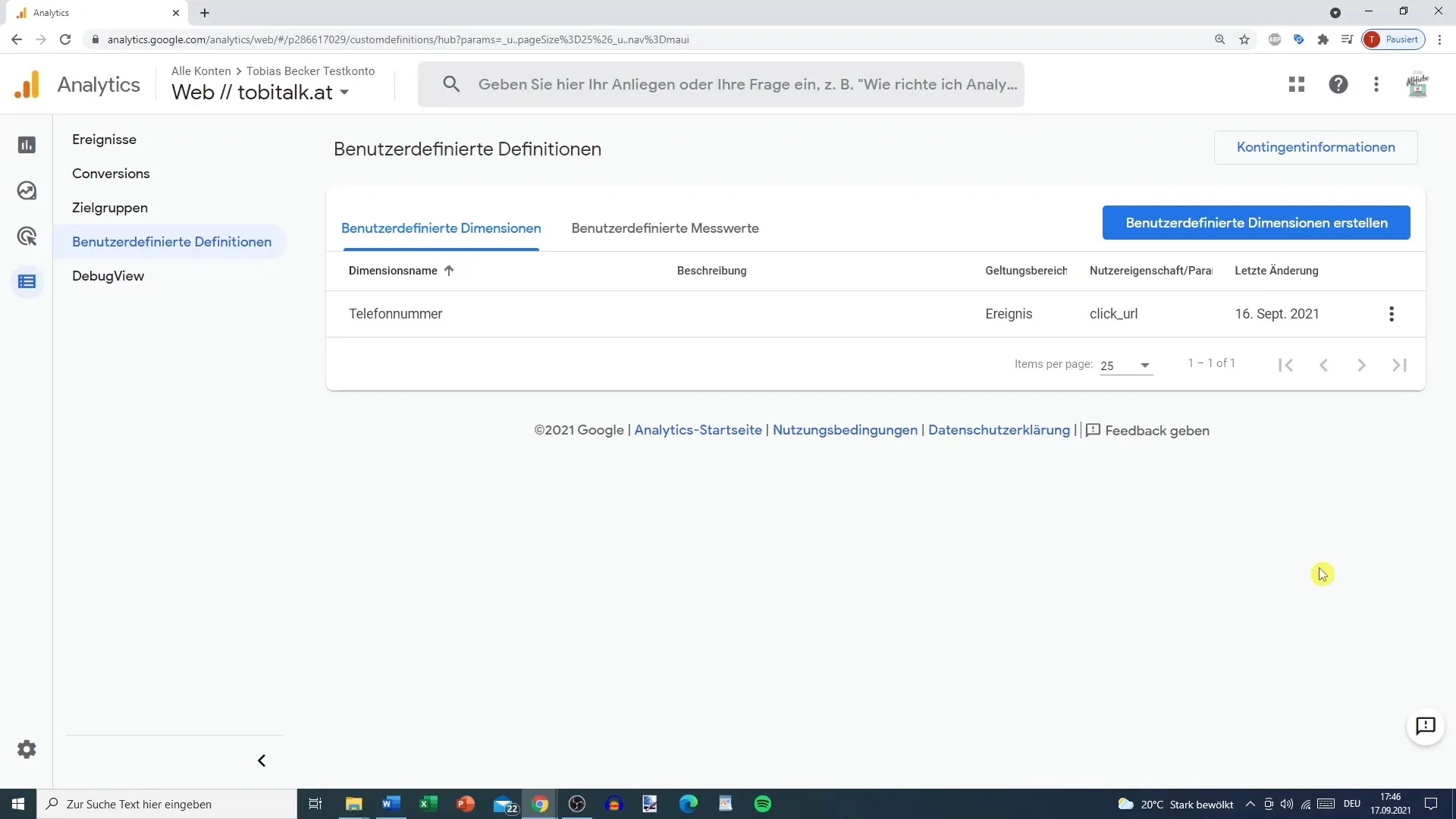
Step 2: Analyzing Interactions
In the Debug View, you will see your interactions broken down in detail. Upon closer inspection, you will recognize the various actions – from "Click to Call" to "Scrolling". These insights are crucial to determine which custom definitions could be useful for your analysis.
Step 3: Adding a Custom Definition
If you want more specific information about an interaction, you can add a custom definition. Let's say you want to precisely track the link text of a specific click. You achieve this by naming the custom definition accordingly – in this case, you could name it "Link Text".
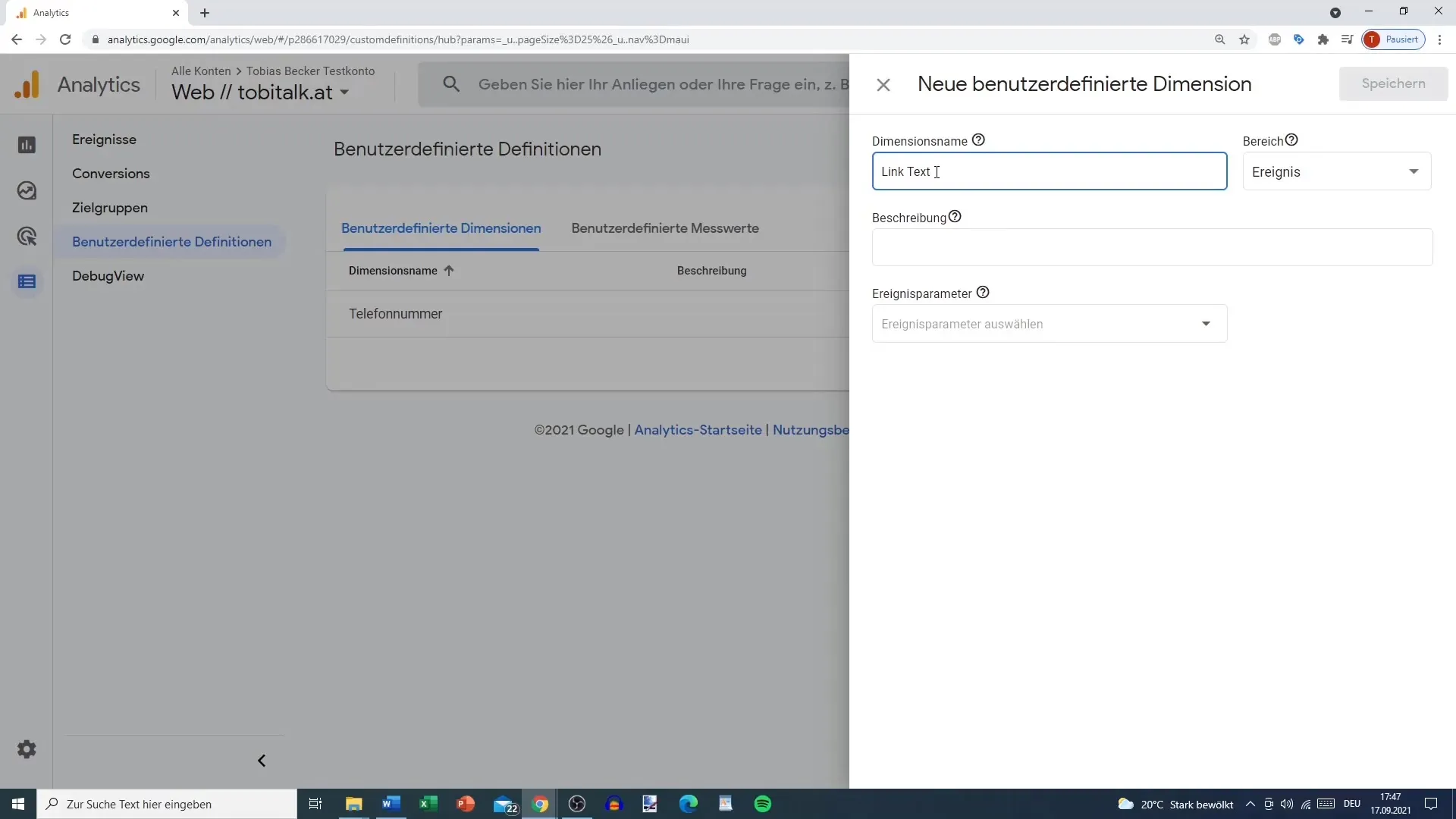
Step 4: Defining Parameters
Now is the time to define the parameters for your custom definition. In our case, we want to add the link text as a parameter. These parameters are crucial for understanding and analyzing the interaction data.
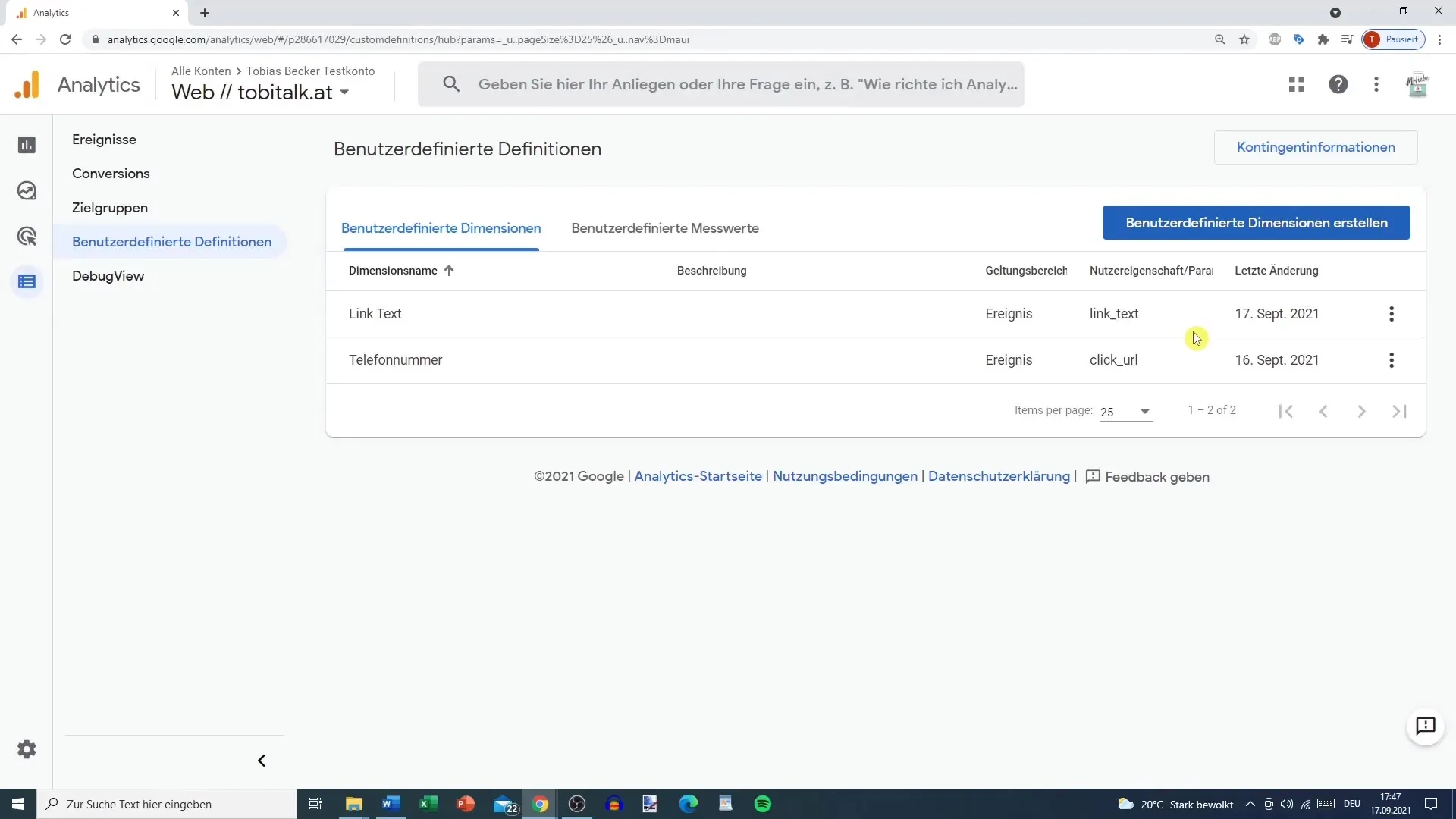
Step 5: Setting Up the Custom Definition
After defining the parameter, it is now important to activate the custom definition. You should also consider combining this with your existing event tracking to consolidate the data.
Step 6: Evaluation in the Debug View
The Debug View remains a valuable tool to closely examine all generated interactions. Here you can track the activities in the last 30 minutes and see how the new custom definitions interact. This summary helps you maintain a clear overview.
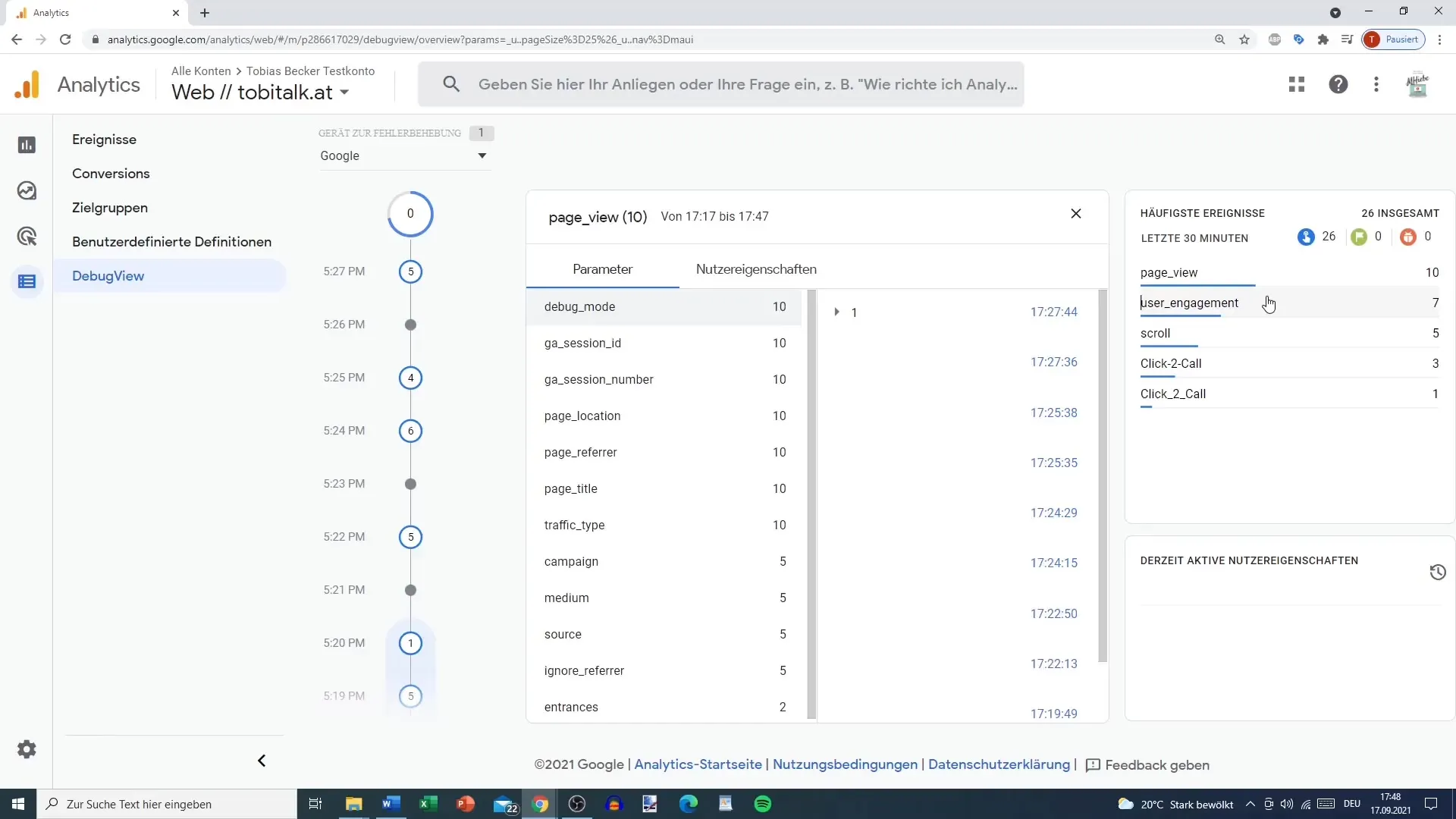
Summary
Setting up custom definitions in Google Analytics allows you to track specific data and significantly enhance your analytical capabilities. By combining event tracking and precise parameters, you can monitor everything in real-time in the Debug View.
Frequently Asked Questions
How do I add a custom definition in Google Analytics?Go to your Property settings and select "Custom Definitions" to add a new one.
What information can I track with custom definitions?You can track specific interactions, user behavior, and more depending on how you name your definitions and which parameters you choose.
Are custom definitions important for analysis?Yes, they allow you to perform targeted analyses and capture specific interaction data that are important for your business.
